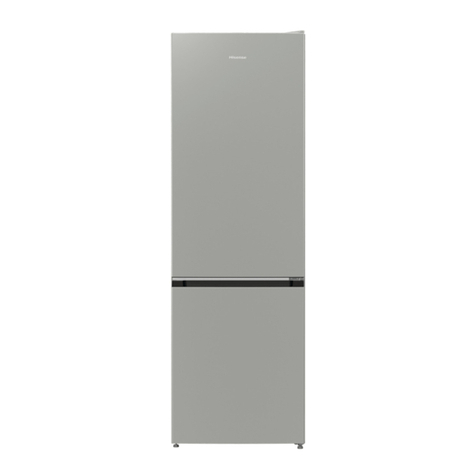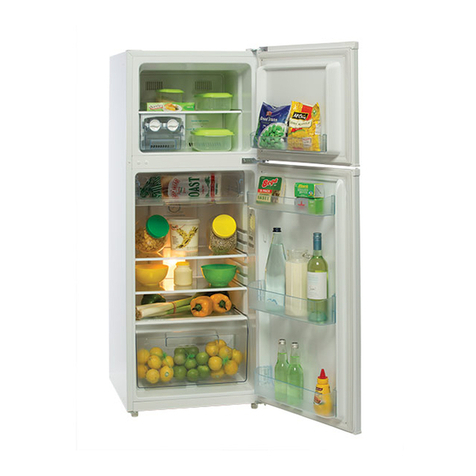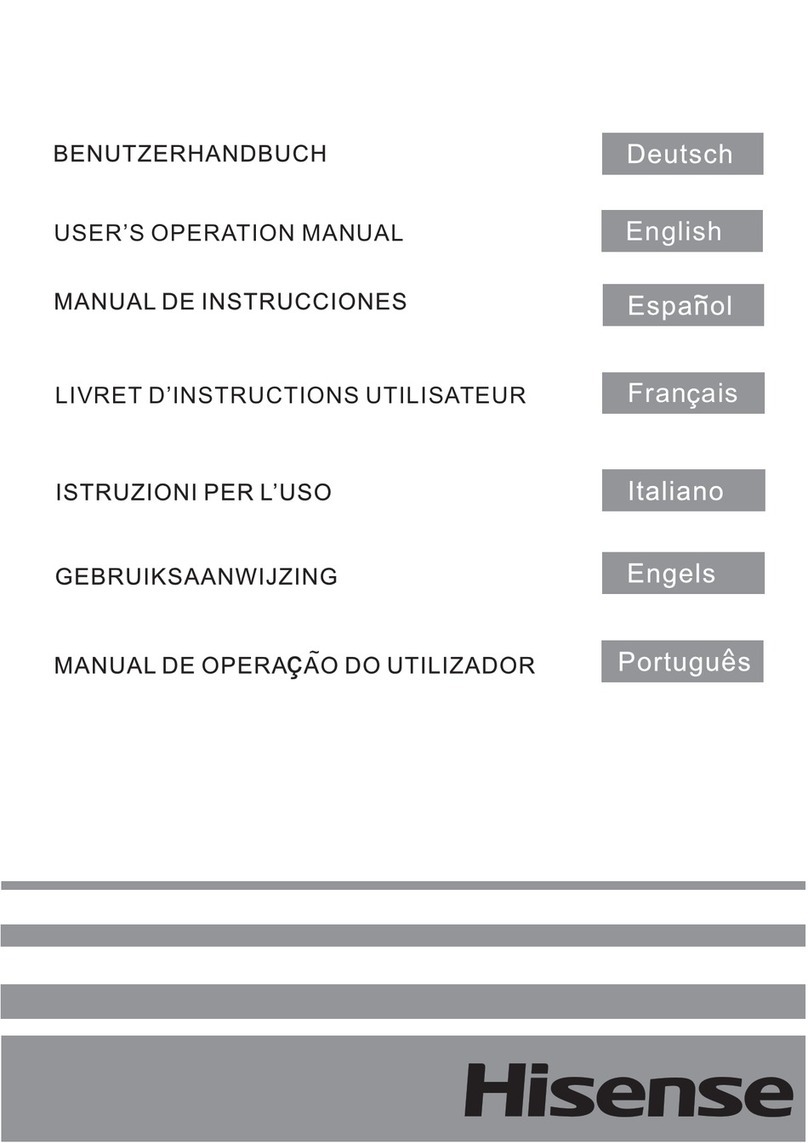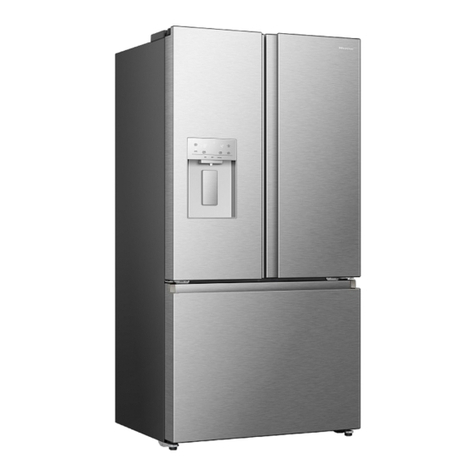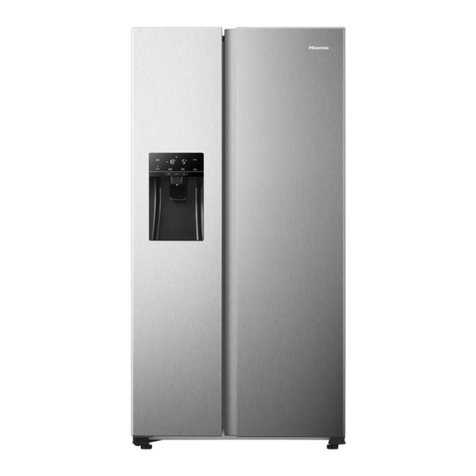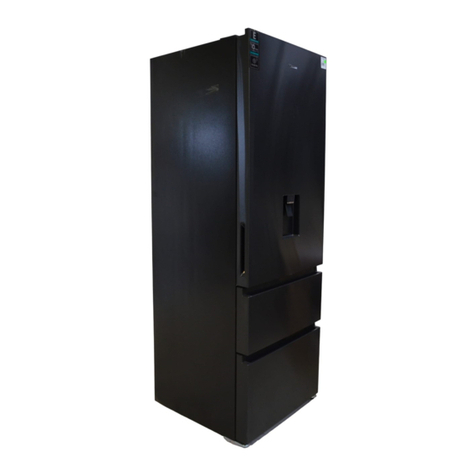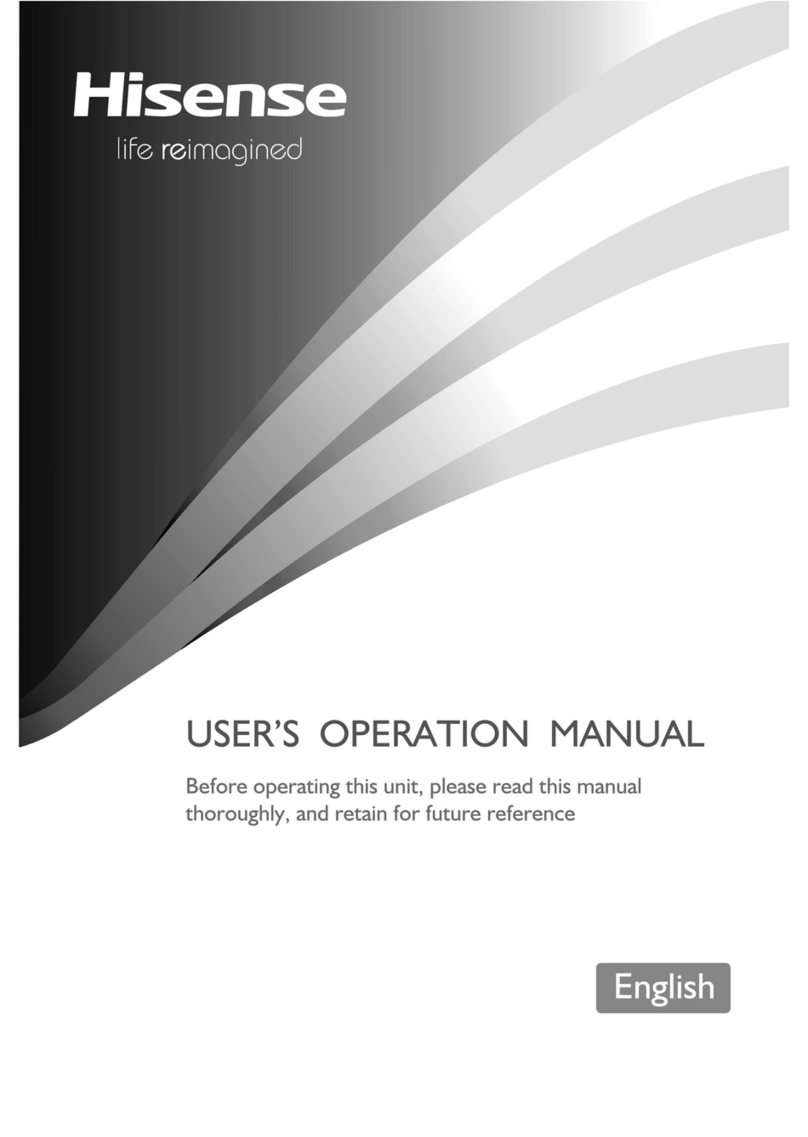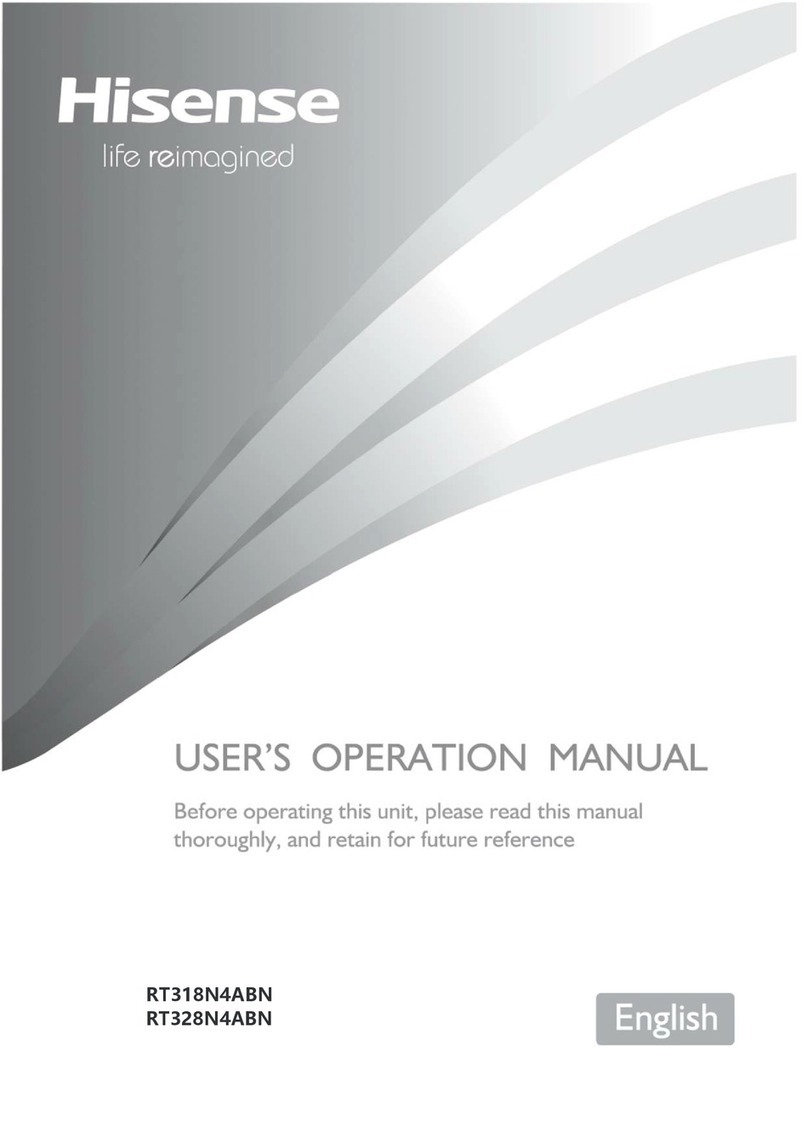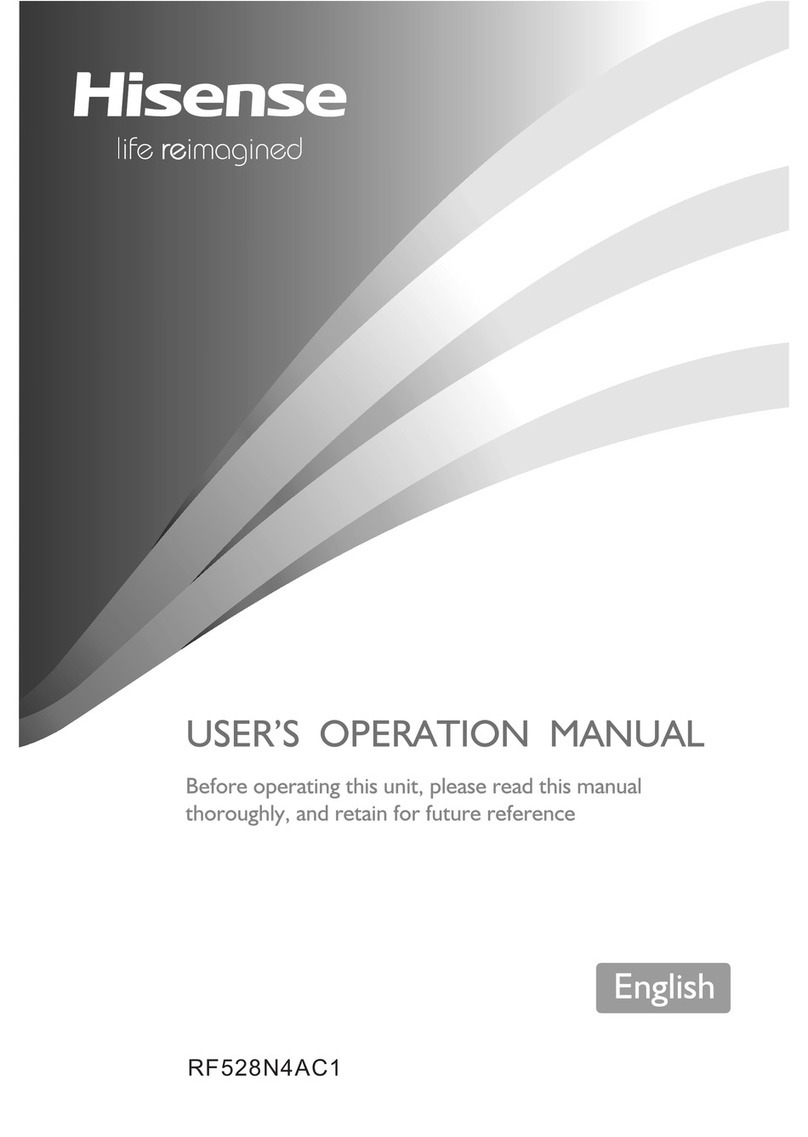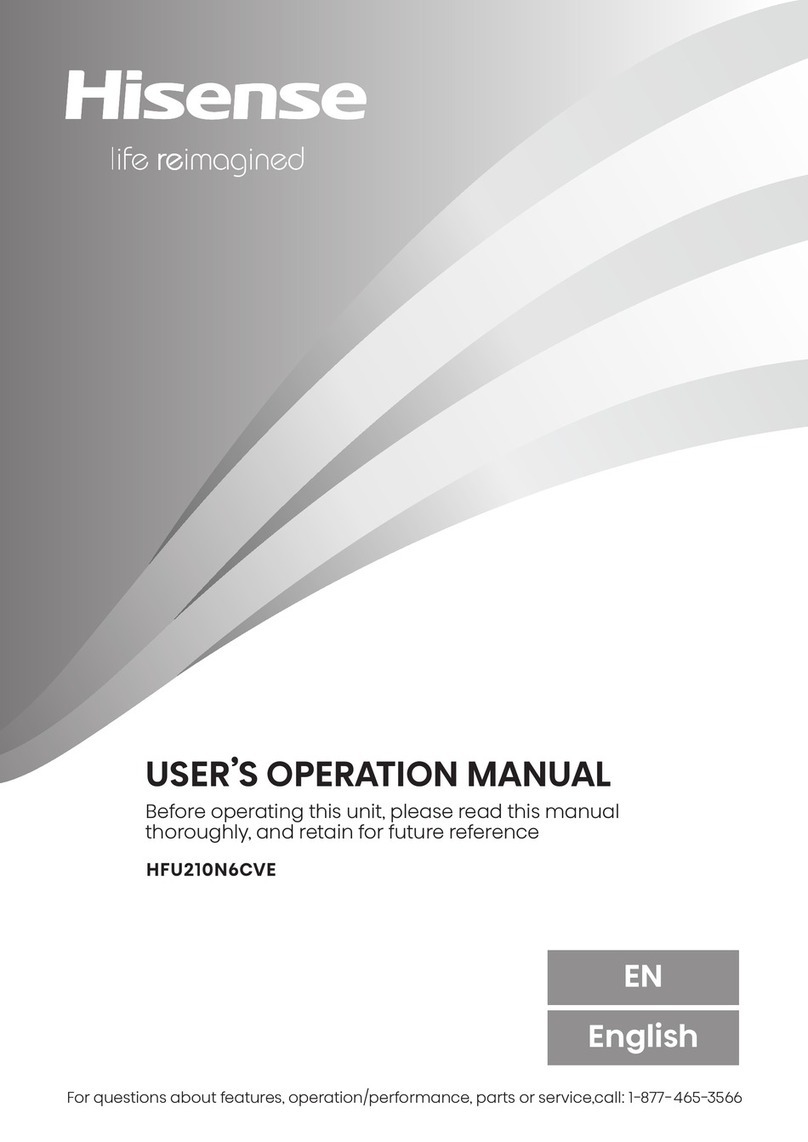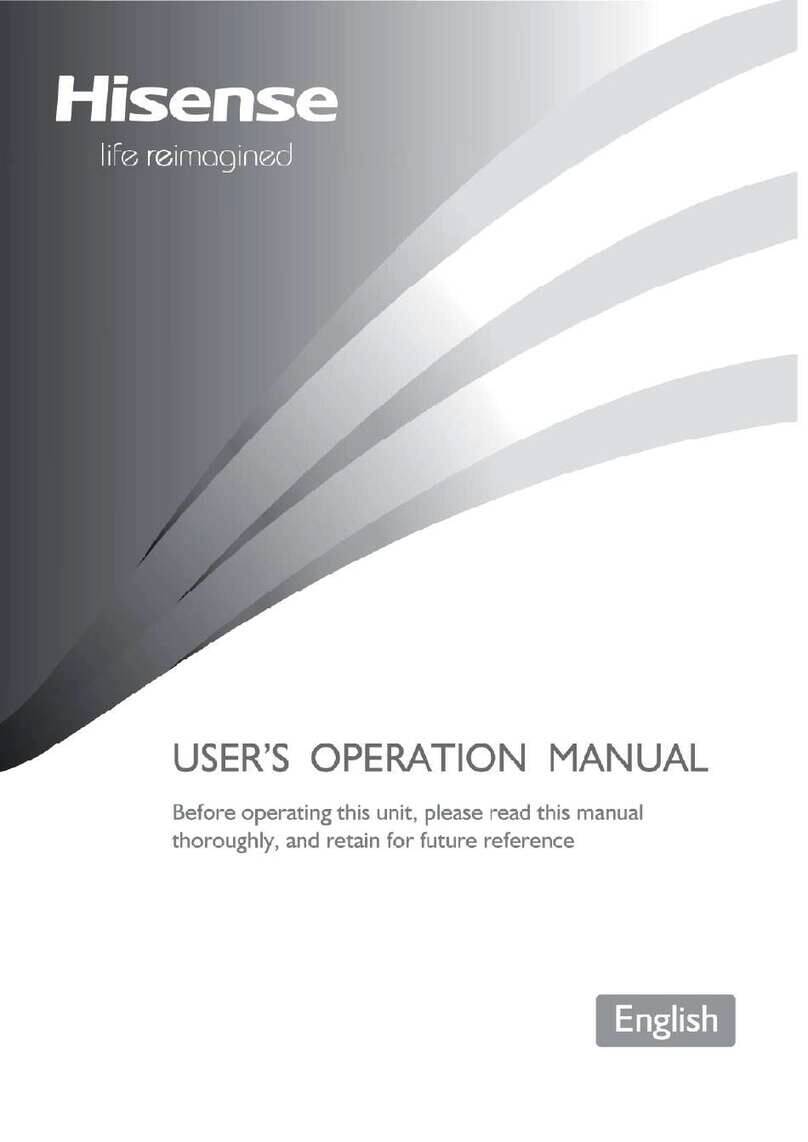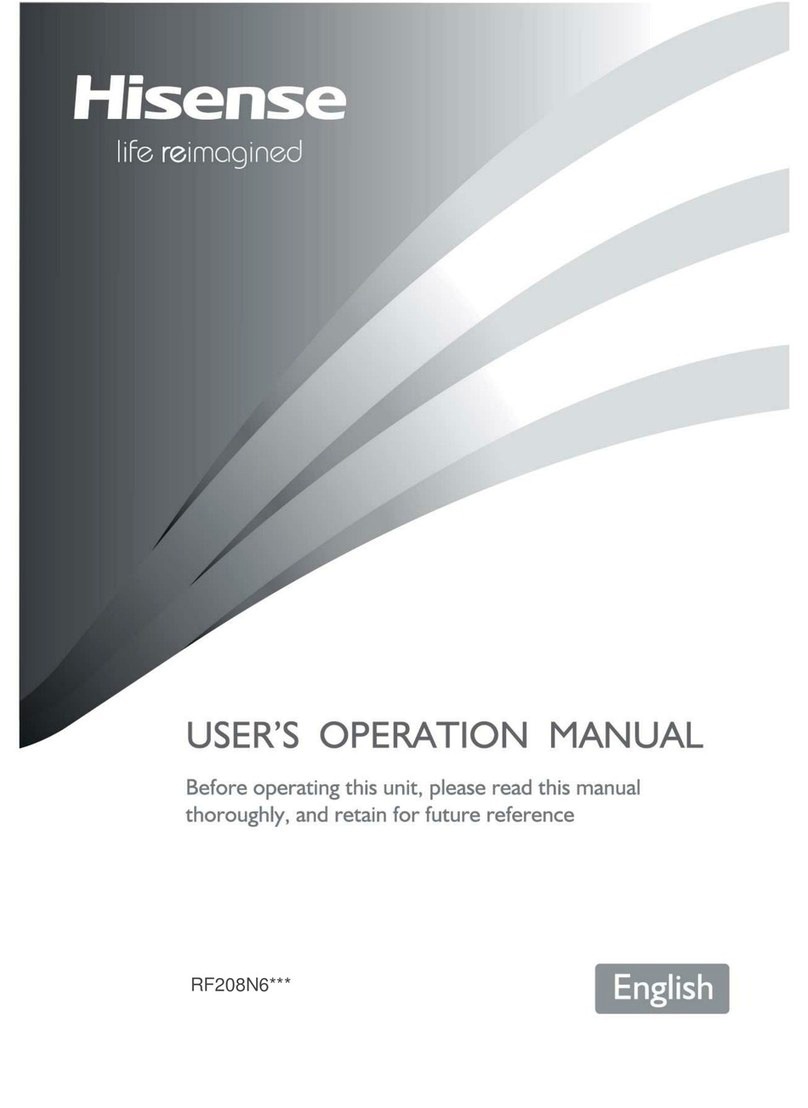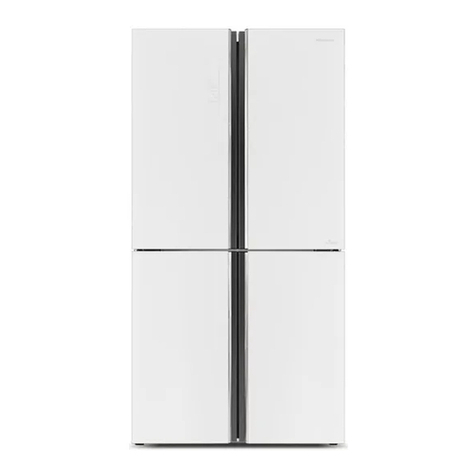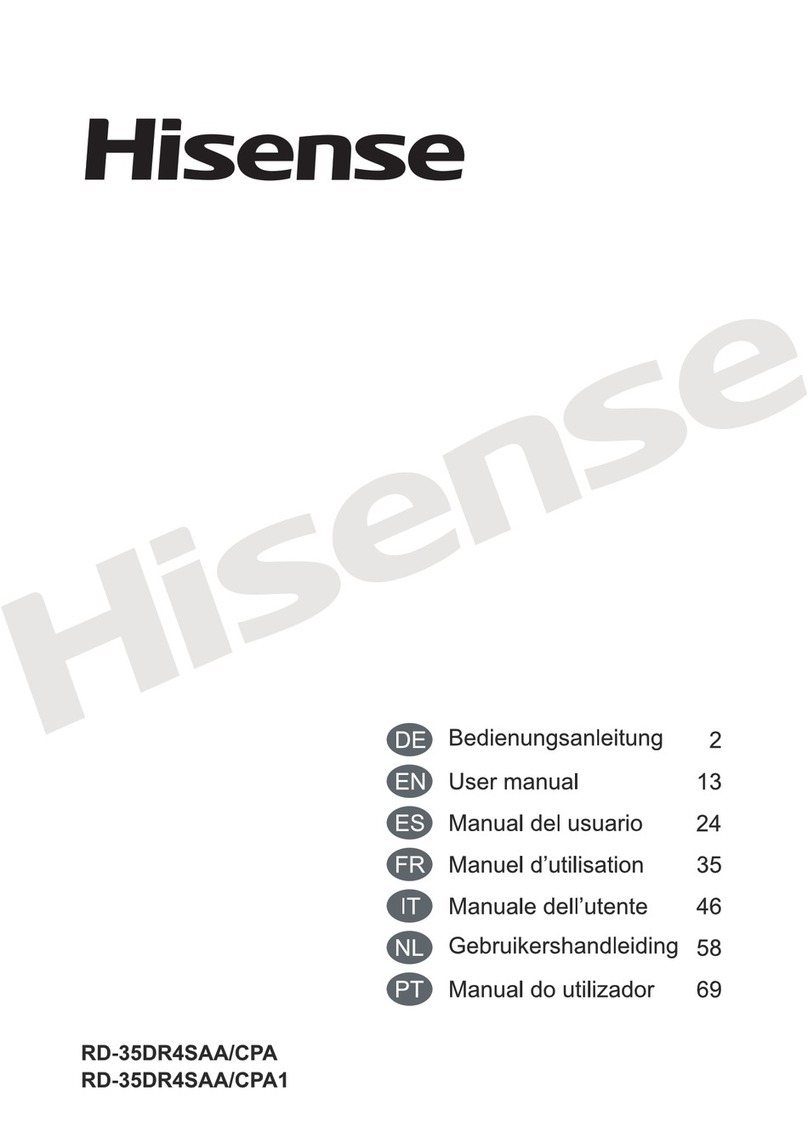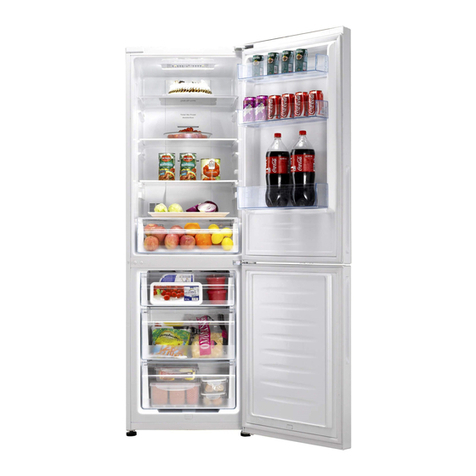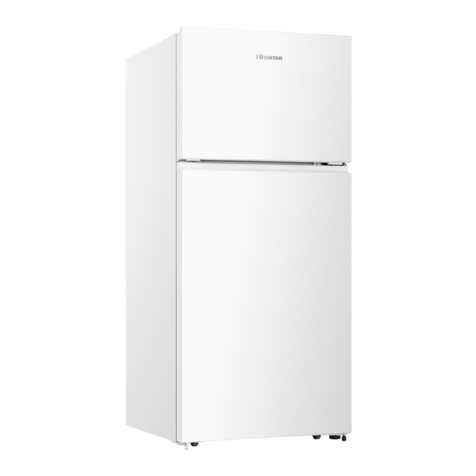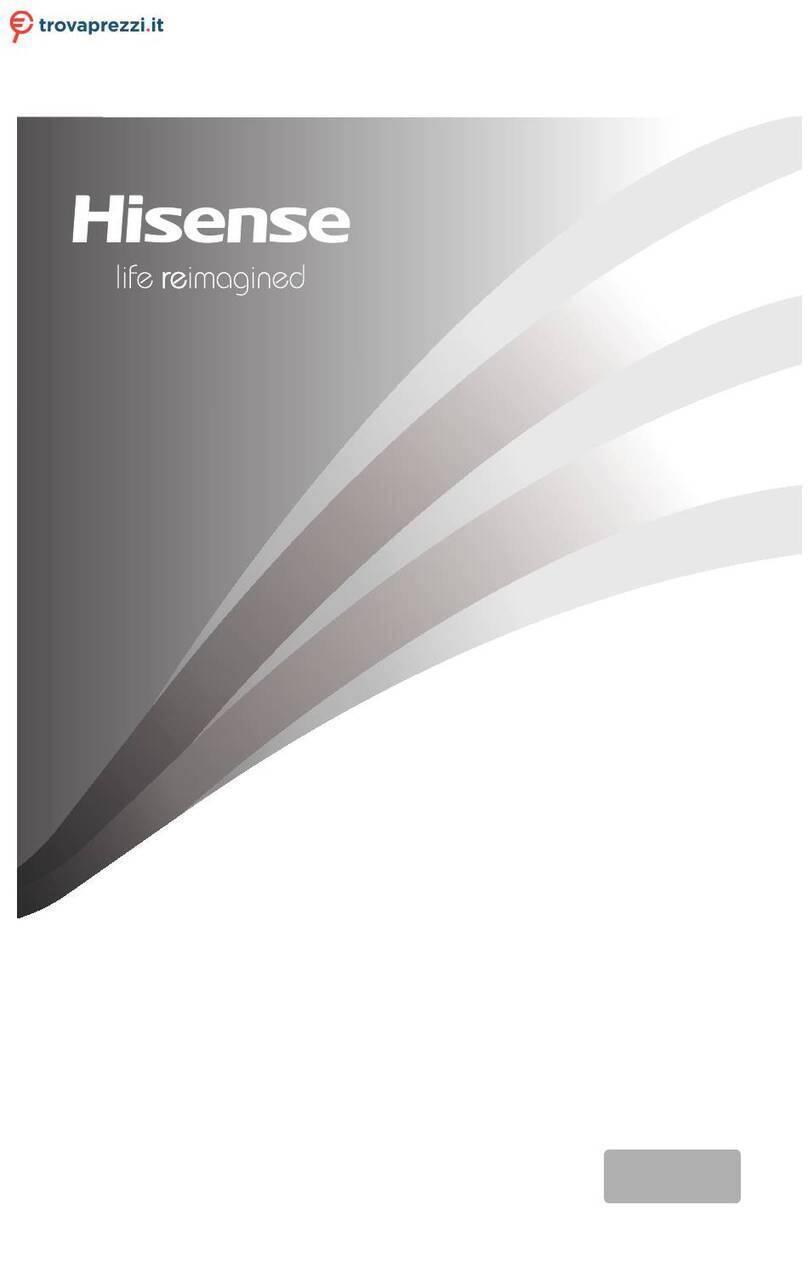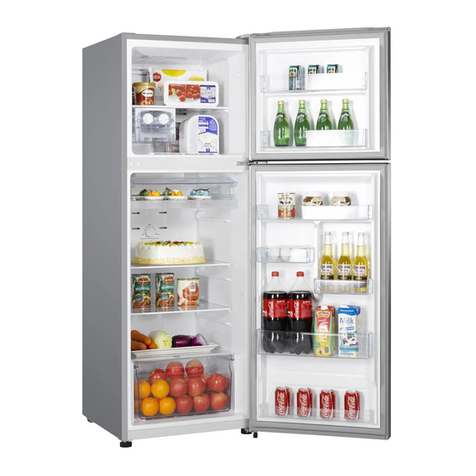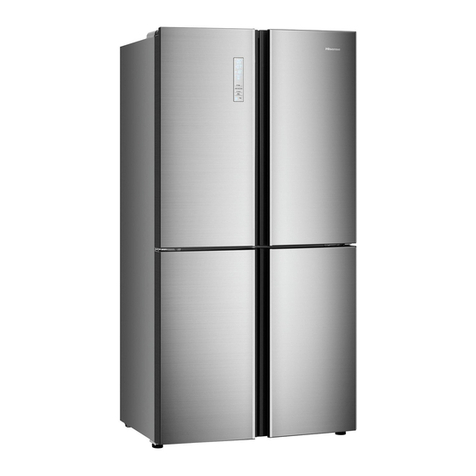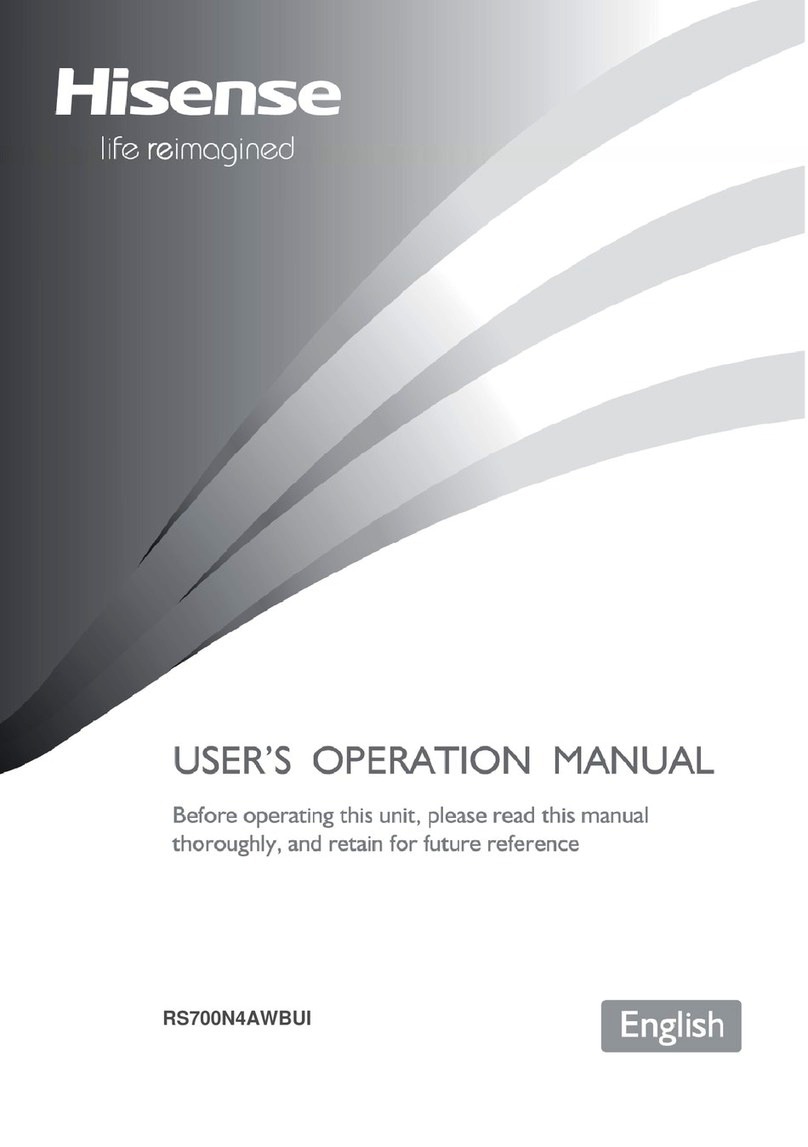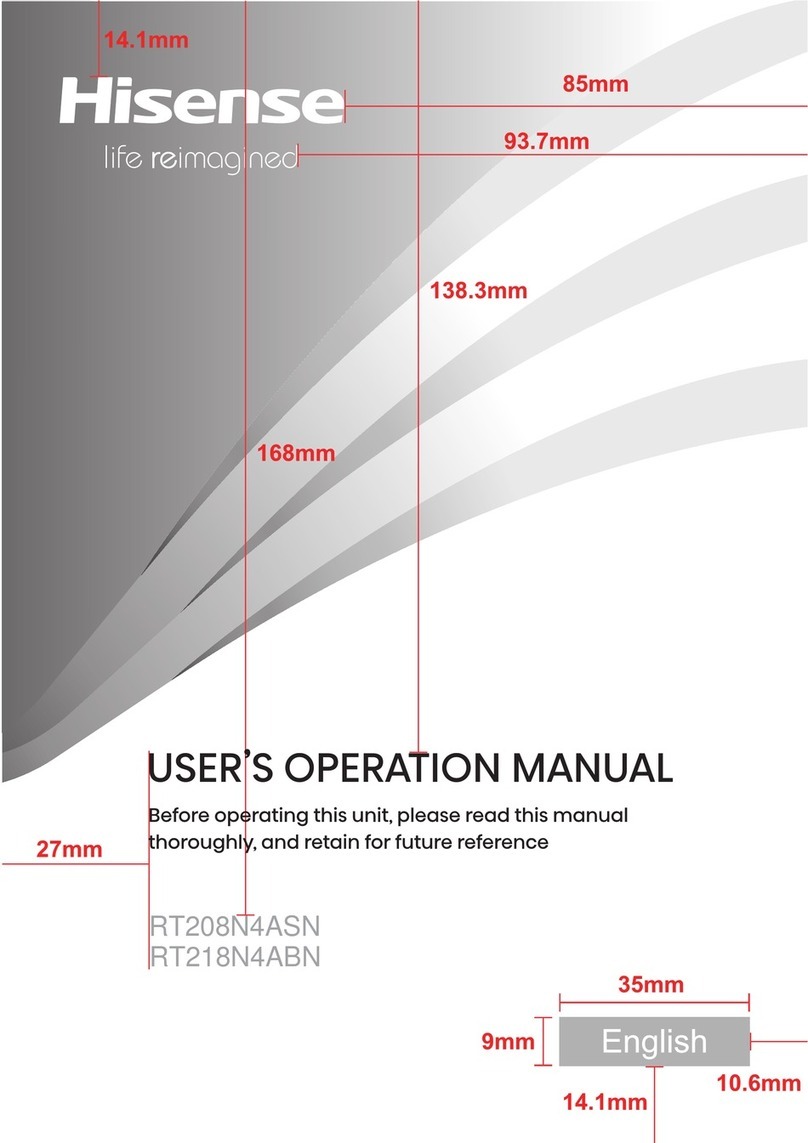Contents
1. Warning and precautions for safety.................................................................................4
2. Appearance and structure ...............................................................................................5
2.1 View of the appliance.............................................................................................5
2.2 Wind channel structure...........................................................................................6
2.3 Evaporator structure...............................................................................................6
2.4 Compressor room structure....................................................................................7
3. Basic parameters.............................................................................................................8
4. Operation and functions ..................................................................................................9
4.1 Display controls......................................................................................................9
4.2 Using yourAppliance............................................................................................11
4.3 Defrost mode........................................................................................................22
4.3.1 Start condition............................................................................................22
4.3.2 Defrost flow................................................................................................22
4.4 Error display .........................................................................................................23
4.4.1 Error Code..................................................................................................23
4.4.2 Checking method.......................................................................................23
5. Troubleshooting.............................................................................................................27
5.1 Common problem and checking ..........................................................................27
5.2 Faulty start............................................................................................................29
5.3 Refrigeration failure..............................................................................................30
5.3.1 Freezer compartment.................................................................................30
5.3.2 Refrigerator compartment..........................................................................31
5.4 Thick frost in freezer compartment.......................................................................32
5.5 Dew in refrigerator compartment..........................................................................33
5.6 Breaking of light....................................................................................................34
5.7 Pipe noise.............................................................................................................35
5.8 PANEL PBA operates abnormally........................................................................35
6. Circuit and checking ......................................................................................................37
6.1 Circuit diagram .....................................................................................................37
6.2 Mainboard.............................................................................................................37
6.2.1 Checking method.......................................................................................37
6.2.2 Removing the mainboard...........................................................................37
6.3 Compressor..........................................................................................................38
6.3.1 Basic parameters.......................................................................................38
6.3.2 Checking method.......................................................................................38
6.3.3 Removing the drive board..........................................................................39
6.4 Fan motor.............................................................................................................39
6.4.1 Basic parameters.......................................................................................39
6.4.2 Checking method.......................................................................................39
6.4.3 Removing the freezer fan motor................................................................40
6.4.4 Removing the condenser fan motor...........................................................41
6.5 Damper (Electric wind gate).................................................................................42
